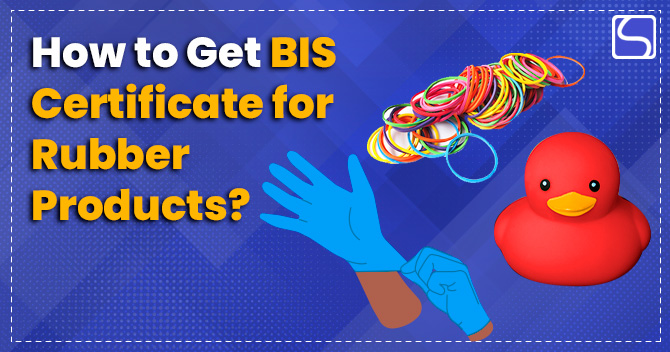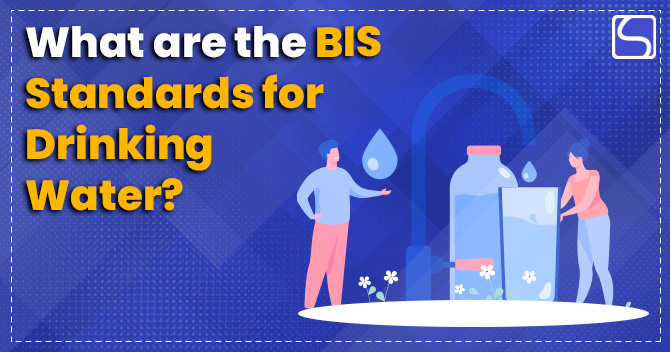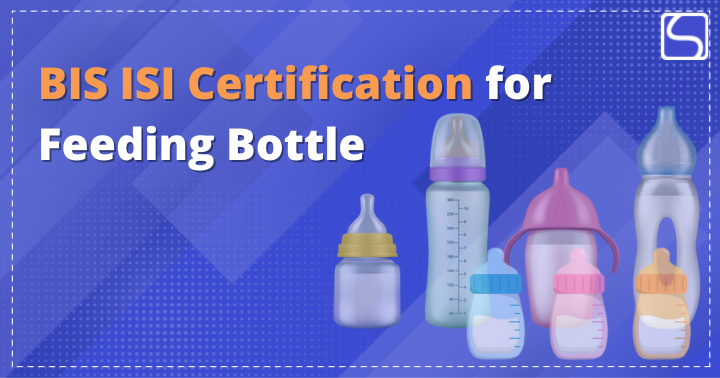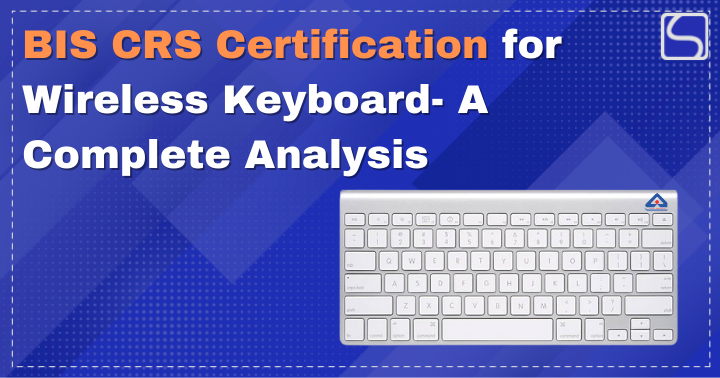How to Get BIS Certificate for Rubber Products?

krishna kumar | Updated: Jun 18, 2022 | Category: BIS
BIS certification scheme is voluntary. However, for several products, compliance to Indian Standards is made compulsory by the Central Government under various considerations, viz. public interest, protection of human, animal or plant health, the safety of the environment and prevention of unfair trade practices and national security. For such products, the Central Government directs mandatory use of Standard Mark under a Licence or Certificate of Conformity (CoC[1]) from BIS through issuing QSOs.
Recently, the BIS has rolled step-wise guidelines for issuing BIS Certification for rubber products. This write-up renders information on the same procedures in a straightforward and simplified way.
Table of Contents
List of the Rubber Products that need to Obtain the BIS Certificate
While furnishing the application for BIS Certificate for Rubber Products, the option for the suitable Indian Standard for your product from the table given below:
| 1. | IS 5557: 2004 | Industrial & protective rubber knee |
| 2. | IS 5557 (Part 2): 2018 | All rubber gum boots as well as ankle boots |
| 3. | IS 5676: 1995 | Moulded solid rubber soles & heels |
| 4. | IS 10702: 1992 | Rubber HawaiChappal |
| 5. | IS 11544: 1986 | Slipper, rubber |
| 6. | IS 3735: 1996 | Canvas Shoes Rubber Sole |
| 7. | IS 7466: 1994 | Rubber Gaskets for Pressure Cookers |
| 8. | IS 2415:2015 | Rubber tubes (moulded/ jointed) |
| 9. | IS 13422:1992 | Disposable surgical rubber gloves |
| 10. | IS 9573 (Part 1):2017 | Rubber-hose for liquefied petroleum gas (LPG) – specification part 1 industrial application |
| 11. | IS 4588:1986 | Rubber, raw, natural |
| 12. | IS 1677: 2018/ISO 1401: 2016 | Rubber Hoses For Agricultural Spraying |
| 13. | IS 1741: 2019 | Latex foam rubber products –Specification (First Revision) |
| 14. | IS 11226: 1993 | Leather safety footwear has a direct moulded rubber sole. |
| 15. | IS 17012:2018 | High ankle tactical boots with PU-rubber sole |
| 16. | IS 3736: 1995 | Canvas boots, rubber sole |
| 17. | IS 446: 2017 | Rubber hoses, textile-reinforced, for compressed air-specification |
| 18. | IS 3976:2018 | Safety rubber canvas boots for miners |
| 19. | IS 10908:1991 | Flexible rubber tubing for liquefied petroleum gas |
| 20. | IS 5382:2018/ ISO 4633:2015 | Rubber Seals — Joint Rings for Water Supply, Drainage and Sewerage Pipelines — Specification for Materials |
| 21. | IS 447:1988 | Specification for Rubber Hose for Welding |
| 22. | IS 9573 (Part 2): 2017 | Rubber-Hose for Liquefied Petroleum Gas (LPG)- Specification Part 2 Domestic and Commercial Application |
| 23. | IS 1370: 1993 | Transmission Belting – Friction Surface Rubber Belting |
| 24. | IS 4148:1989 | Surgical Rubber Gloves |
| 25. | IS 5192(Part 2):1994 | Natural Rubber Compounds – Specification Part 2 for Extruded Products |
| 26. | IS 5557 (PART 2):2018 | All rubber gum boots and ankle boots part 2 occupational purposes |
| 27. | IS 8391 (Part 1): 2019 | Rubberized coir sheets for cushioning (part 1: curled) |
| 28. | IS 444: 2017/ISO 1403:2005 | For rubber hoses, textile-reinforced, for general-purpose water applications |
| 29. | IS 8164:1976 | Hospital Rubber Sheeting Without Reinforcing Fabric |
| 30. | IS 15354 (Part 1):2018 | Single-Use Medical Examination Gloves-Gloves Made from Rubber Latex or Rubber Solution |
| 31. | IS 3549: 2017/ISO 4641:2010 | Rubber Hoses and Hose Assemblies for Water Suction and Discharge |
| 32. | IS 638: 1979 | Sheet Rubber Jointing and Rubber Insertion Jointing |
| 33. | IS 15466:2004 | Rubber Seals For Hydraulic Gates |
| 34 | IS 15500 (Part 7):2021 | Hand pump rubber components |
Note: If you intend to obtain a BIS Certificate for multiple products, you must file separate applications for each product of Indian Standard.
Procedure to obtain BIS Certificate for Rubber Products
Following is the Steps guide prepared by BIS the obtain of BIS certificate for rubber products.
Step 1: Go through the Indian Standard
- The first step is to pinpoint relevant Indian Standard for your product category. Once you have located the appropriate standard, download the same from the BIS portal after creating the account.
Go through the Indian Standard to check;
- Whether your product fulfils the underlying norms cited in Indian Standard
- Where your manufacturing unit has required equipment and test facilities in place.
Rubber Product makers, lacking necessary testing facilities, must reach out to BIS-certified labs. These labs enable rubber manufacturers to test their products for underlying quality standards. Such as tests for innocuousness & slip resistance cited for PPE “IS 11544: 1986-Slipper, rubber” are allowed to be subcontracted by BIS
Step 2: Visit the Online portal-manak online and create an account
Visit manak online portal and create a login account on this portal. After login, you can proceed with the application filing process.
Step 3: Select an Apt Indian Standard
Presently, the BIS portal facilitates two modes of application filing for the rubber products manufacturer, namely, standard and simplified procedures. The usual process enables the manufacturer to apply for a BIS Certificate for rubber products without a quality test report bestowed by a BIS-certified lab. Meanwhile, under the simplified process, the applicant must submit the test report while applying for the BIS Registration.
Under the simplified process, shall grant the license after thorough verification. For this objective, the authority’s official randomly draws a “verification sample” from the production lot and then tests the same for desired quality conditions.
Step 4: Facilitate requested Details.
During the application procedure, go through the on-screen guidelines in the BIS portal to provide detail regarding the given below:-
- Raw materials
- Manufacturing procedure and machinery
- Factory location
- Testing personnel
- Plant layout
Once done, proceed to make the online payment against the applicable fees
While applying via the simplified process, upload the simplified process granted by the BIS certified Lab.
While rendering information about the test equipment, ensure that the test facilities for which subcontracting has not to be allowed in the scheme of inspection and testing are present in your facility and manifested in the list being uploaded.
If the scheme of inspection & testing or product manual is not available for your product, and if you intend to be allowed to subcontract any of the tests mentioned in the Indian standard to a BIS-certified lab instant of establishing the test facility in-house, make sure to intimate the respective branch officer & furnish your proposal for allowing subcontracting with due justification, to them. Also, render clarity on which BIS certificated lab you intend to subcontract these tests.
Step 5: Address any concerns raised by the BIS
- After successful registration shall generate an application number on the portal.
- Make sure to go through the communication box located on the portal.
- If you encounter any objections, BIS raises, responds promptly and addresses all concerns.
Step 6: confirm the date of factory inspection.
Once the department has proposed a date for inspection, provide your confirmation regarding the same within ten days from the date of application submission; failing that may process your request for obtaining BIS Certificate for Rubber Products for closure or rejection. However, in such a scenario, you may file a new application when you are ready to confront the inspection requirement after paying the application fee.
Step 7: Comply with underlying norms during factory inspection for the BIS Certificate for rubber products
- All categories of products that are mandated for inspection & sampling are available at the facility.
- To provide the feasible difficulties in the test of the variety of rubber products enlisted in Indian Standards, BIS underpins grouping conditions to permit the issuance of a license for multiple varieties of the rubber product depending on the testing of samples of specific varieties. Can examine the rubber products of the specific material & design of any group to encompass that material, the design of rubber products.
- If grouping norms are specified for the particular rubber product, make sure to facilitate samples accordingly, depending on the product you manufacture.
- The appropriate production procedure is available, and production or quality control staffs are there.
- Ensure availability of required machinery and testing facility.
- Ensure testing of samples by quality control expert in the presence of the BIS personnel & test report generated.
Step 8: Complete follow-up action arising out of on-site inspection
- If BIS personnel pinpoint any loopholes during the on-site inspection, they share the same via Discrepancy cum Advisory report. Make sure to respond to all queries within the given timeline.
- Suppose the BIS personnel is satisfied with the inspection & sample verified in factory conform. In that case, they will seal samples and counter-samples of the items under the guidelines in the product manual.
- If the BIS personnel grants guidelines to you to dispatch the sample in addition to the test request to the certified lab, do so promptly within 24 hours and furnish delivery proof of BIS.
Step 9: Payment of a Requested Fee & Avail BIS Certificate for Rubber Products
- For Option 1: After receiving the test reports with no action pending, BIS shall proceed to procedure the application for the issuance of the Certification.
- For Option 2: If no action is pending after the inspection, the BIS shall proceed to procedure the application for the issuance of the Certification.
- After it is decided to grant the registration, you shall be prompted by BIS to furnish the standard payment. As soon as the department receives the payment, they shall share the BIS license number with you.
Conclusion
Once the BIS inspects the factory and market activities of the certificate holder post-issuance of the BIS Certificate for rubber products. During such an inspection, the certificate holder must cooperate with BIS officers or BIS Authorized Agencies to the fullest. If, after the certificate issuance, you intend to manufacture more varieties of rubber products, you need to grant approval from BIS in the scope of the Certificate.
Read our Article:How to Obtain BIS Certification for Electronics Clock in India














